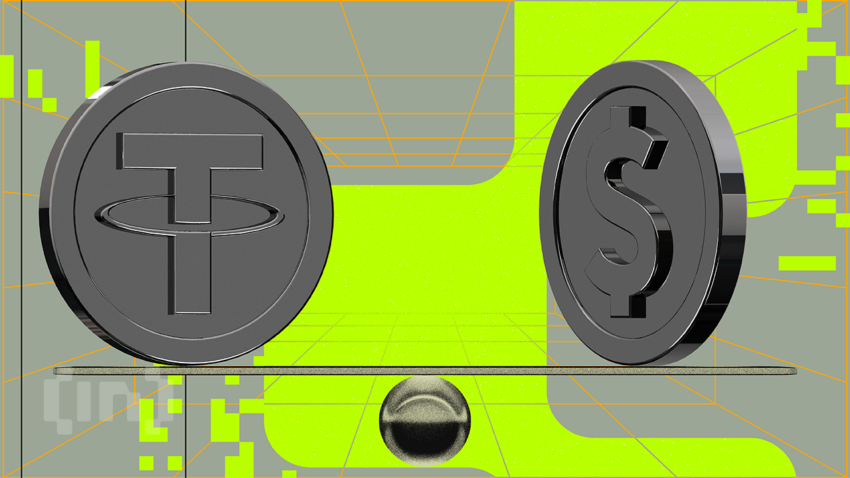Stablecoins are digital tokens designed to maintain a stable value by being pegged to an underlying asset, such as another currency, commodity, or financial instrument. This token class is key to bridging the gap between fiat and crypto assets. But how is it regulated? This guide takes a look at stablecoin regulation across the globe in 2024. Here’s what you need to know.
KEY TAKEAWAYS
► Stablecoin regulations vary by country, each has its own unique approach to oversight and control.
► Major economies like the U.S. and the E.U. are implement stringent regulations for stablecoins, potentially impacting their operation and adoption.
► Some countries, such as China and Russia, have restrictive policies toward stablecoins and cryptocurrencies.
► The global nature of stablecoins highlights the need for coordinated international regulatory frameworks to ensure consistency.
How are stablecoins regulated around the world?
Let’s take a quick look at how stablecoin regulation varies in different parts of the globe in 2024.
United States

Stablecoin regulation in the United States is not very specific. There are hints that the SEC regulates assets as securities, but this hasn’t been confirmed. For example, the Binance stablecoin, BUSD, was shut down due to a lawsuit against Paxos from the SEC.
The suit alleged that BUSD was a security. However, the court involved in the case determined that the offering of BUSD by Paxos did not constitute an investment contract and, therefore, is not a security. The judge also expressed that enforcement by litigation may lead to potential risks:
The agency’s decision to oversee this billion dollar industry through litigation — case by case, coin by coin, court after court — is probably not an efficient way to proceed, and it risks inconsistent results that may leave the relevant parties and their potential customers without clear guidance.
Judge Amy Berman Jackson: SEC vs. Binance
Various groups, such as the Financial Crimes Enforcement Network (FinCEN), the Office of the Comptroller of the Currency (OOC), and the Commodity Futures Trading Commission (CFTC), must apply their own federal regulations to stablecoins.
States can also have their own regulations in addition to the federal ones, making this scenario even more complicated.
European Union

The E.U. published a regulation on cryptocurrencies, with a large part specifically focusing on stablecoins. Titled “Markets in Crypto-Assets Regulation (MiCA),” the document states that stablecoins, while similar to traditional investments, can generate more annual interest by lending on decentralized platforms.
Because of this, the new stablecoin regulation requires that stablecoins register with regulatory groups so that anyone can trade them legally. This could also affect stablecoin lending interest rates, with details stating it might prevent earning interest on stablecoins altogether.
The implementation of so many regulations will likely put off many stablecoin issuers, ensuring they’ll never become a part of the E.U. economy.
Some analysts suggest that these regulations came into effect shortly after Facebook’s Libra announcement. Libra scared various regulators around the world, forcing their hand and having them rush out stablecoin regulation that attacks the digital assets rather than works with them. Time will tell whether this will last or not.
China

That said, citizens who already have cryptocurrencies can still hold them. This decision could precede the implementation of a stablecoin issued by the Chinese Central Bank in the near future.
Japan

Japan has been working to regulate cryptocurrencies across the board. In June 2022, Japan enacted legislation that defines stablecoins as digital money and imposes strict regulations on their issuance. There are two types of stablecoins in Japan: crypto asset-type stablecoins and digital money-type stablecoins.
Digital money-type stablecoins are linked to a fiat currency, are redeemable at face value, and must be issued by approved institutions. Among the parties permitted to issue these types of stablecoins in Japan are:
- Licensed banks
- Registered money transfer agents
- Trust companies
Crypto asset-type stablecoins are all other stablecoins that do not fall under the definition of digital money-type stablecoins and fall under the Payment Services Act or the Financial Instrument and Exchange Act.
Singapore

Singapore, a highly progressive country, claims that stablecoins meet regulatory standards if the Securities and Futures Act (SFA) is applicable. In October 2022, the Monetary Authority of Singapore (MAS) released regulatory proposals specifically targeting stablecoins.
MAS finalized these regulations by August 2023. They include requirements for reserve assets, capital adequacy, and disclosure standards. To operate in Singapore, stablecoin issuers must comply with these regulations.
Middle East

Middle Eastern countries vary in terms of stablecoin regulation. Some have their own policies regarding stablecoins and cryptocurrency in general. Others, such as the region of Dubai, have rules similar to those implemented by the European Union.
The United Arab Emirates (UAE), including financial free zones like Dubai and Abu Dhabi, has established comprehensive regulatory frameworks for cryptocurrencies and virtual assets.
In 2022 and 2023, authorities like the Dubai Virtual Assets Regulatory Authority (VARA) and the Abu Dhabi Global Market (ADGM) introduced regulations that encourage crypto businesses while ensuring compliance and risk management.
Russia

Russia has been very back and forth when it comes to stablecoin regulation and crypto in general. The country states that crypto-related crowdfunding platforms and projects must abide by specific “digital rights” legislation introduced by the government in 2019.
There’s little mention of stablecoins in this regulation, so one assumes that the rules apply to fiat-backed assets as well. Similar to China, we can expect that Russia will introduce its own bank-issued stablecoin and require the use of only that one compared to others.
Additionally, due to sanctions, Russia eventually rolled back its laws restricting cryptocurrencies as payment services in 2024, but only for international payments.
What are stablecoins?

Put simply, a stablecoin is a cryptocurrency tied to the value of another asset, such as a fiat currency. It’s basically a way to harness the power of blockchain technology without suffering from volatility and other issues inherent to it.
Most stablecoins are Ethereum-based, such as Tether (USDT) and True USD (TUSD), which reference the US dollar. These assets have been around almost as long as Bitcoin and other cryptocurrencies, with some referencing those as well.
Any cryptocurrency that’s tied to the price of a physical asset is considered a stablecoin. That’s because these assets don’t have inherent value, like Bitcoin. Rather, stablecoins inherit their value from assets they’re tied to. One such asset is fiat currency, like the U.S. dollar.
A stablecoin’s peg to the price of a physical asset is an important distinction, as other assets maintain a peg with digital assets, like wrapped tokens. Wrapped tokens are very similar to and easy to confuse with stablecoins. However, they differ because, unlike stablecoins, wrapped tokens are only meant to redeem another asset, not hold the asset’s value.
Are stablecoins a security?
There has been no official regulation on stablecoins so far, at least in the United States. However, Securities and Exchange Commission Chairman Gary Gensler has hinted at stablecoins like PAX and BUSD falling under securities laws.
His decision comes from the fact that the value of securities often determines stablecoins, so the digital counterparts should fall under those same rules. This is opposed to countries like Japan, where stablecoins may fall under securities laws.
How does stablecoin lending work?
Investors often use stablecoins to make loans and borrow on different decentralized applications (DApps). These DApps allow those with liquidity to lend out their funds. One easy way to do so is with stablecoins — especially those tied to the US dollar.
If a borrower wants to avoid volatility and focus more on acquiring a loan, stablecoins are a convenient solution. Traditional legal processes can take days and cost extra, but stablecoin loans materialize within hours. Borrowers also have some say in how to pay back that loan in terms of interest rates and minimum payments.
Are stablecoins regulated?
Yes and no. In some cases, stablecoins are regulated based on overall laws that affect cryptocurrencies. That said, there is very little stablecoin regulation that focuses only on this type of digital asset. Officials worldwide are closely examining this matter.
Considering stablecoins are quite different from traditional crypto, this is a problem. Countries need specific regulations for stablecoins to exist as they are. As we shall see, the laws tend to vary somewhat, so regulation is a very jurisdictional concern.
General policies regarding stablecoin regulation
Now you’re aware of the differing types of regulation surrounding stablecoins. But it’s important to note the legislative similarities around the world — cryptocurrencies are a global asset, after all.
For one, fiat-backed currencies all obviously focus on the transfer of value. Governments will have to ensure that parties can safely utilize stablecoins for that reason. Additionally, they will have to report these transactions so that they are not used for tax evasion.
Frequently asked questions
What are stablecoins?
How do stablecoins maintain their stability?
What are the benefits and risks of using stablecoins?
Disclaimer
In line with the Trust Project guidelines, the educational content on this website is offered in good faith and for general information purposes only. BeInCrypto prioritizes providing high-quality information, taking the time to research and create informative content for readers. While partners may reward the company with commissions for placements in articles, these commissions do not influence the unbiased, honest, and helpful content creation process. Any action taken by the reader based on this information is strictly at their own risk. Please note that our Terms and Conditions, Privacy Policy, and Disclaimers have been updated.




